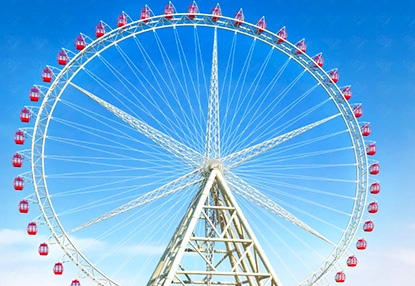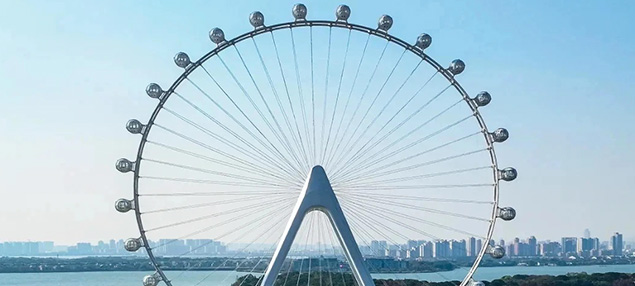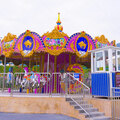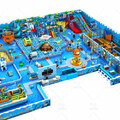Investing in a ferris wheel is a strategic decision that blends visual impact, crowd engagement, and long-term revenue generation. As one of the most recognizable icons in any amusement environment, the ferris wheel must meet both operational requirements and aesthetic expectations. Selecting the right model involves careful consideration of site conditions, demographic alignment, mechanical specifications, and supplier credentials.
Ferris wheels vary significantly in size, configuration, passenger capacity, and technical sophistication. Understanding these variables ensures better alignment between investment goals and actual outcomes, especially in parks, tourist zones, urban plazas, or shopping complexes where a ferris wheel serves as a central attraction.
Height, Capacity, and Visual Dominance
Height is often the most defining characteristic. Ferris wheels can range from compact models under 10 meters to towering installations exceeding 100 meters. Selection depends largely on available space, local zoning restrictions, and intended visibility range. A taller structure offers more panoramic views and landmark potential, but it also demands more extensive foundation engineering and safety compliance.
Passenger capacity correlates directly with revenue potential. Smaller units may feature 12–16 cabins, accommodating 24–48 passengers per cycle, while larger wheels can support over 100 riders at once. When choosing a ferris wheel for sale, evaluate the expected daily footfall and determine the optimal throughput needed to meet revenue targets without excessive wait times.

Cabin Design and Ride Comfort
Cabin style affects both functionality and guest experience. Open-air gondolas are suitable for seasonal and outdoor installations with mild climates. In contrast, fully enclosed and climate-controlled cabins offer year-round usability, particularly in regions with fluctuating weather.
Modern models include features such as cushioned seats, panoramic glass panels, and intercom systems. For premium applications, select cabins may be fitted with VIP amenities—leather seating, mood lighting, or even dining tables—creating a tiered pricing model that increases per capita spend.
Lighting systems also enhance cabin visibility and nighttime appeal. Integrated LED strips, programmable color sequences, and motion-synced displays transform the wheel into a kinetic sculpture after dark, increasing attention and visitor interest.
Drive System and Structural Integrity
The two primary drive systems for ferris wheels are center drive and rim drive. Center drive uses a motor at the axle, making it compact but potentially less smooth at scale. Rim drive uses rollers along the circumference to propel the wheel, offering better weight distribution and improved ride consistency for larger units.
Structural materials are another critical factor. Galvanized steel frameworks resist corrosion and provide long-term durability. Weld joints, cabin hangers, and foundation bolts should be certified for mechanical stress and fatigue over continuous cycles. All mechanical systems must comply with international standards such as ASTM, EN13814, or GB8408.
Pre-load tension analysis, wind-load capacity, and seismic resistance must be factored in based on site conditions. Local regulations may also dictate noise output, structural load bearing, and operational decibel thresholds.
Logistics, Assembly, and Site Requirements
A common mistake in ride procurement is underestimating logistical and installation complexity. Transport dimensions, crane access, assembly duration, and ground preparation all affect setup cost and project timelines. For fixed installations, concrete foundation slabs with reinforced anchor points are required. Mobile units must include hydraulic leveling systems and compact trailer configurations.
Weather protection is often necessary during the construction phase. Modular wheels allow quicker assembly through segmental design, reducing labor costs and minimizing on-site customization.
When sourcing a ferris wheel for sale, operators should work with suppliers offering full civil engineering support, foundation drawings, and installation supervision. This not only reduces liability but ensures compliance with local building codes and insurance prerequisites.
Control Systems and Automation
Modern ferris wheels are equipped with digital control panels featuring programmable ride cycles, emergency stop protocols, and real-time diagnostics. PLC-based automation ensures smooth acceleration and deceleration, energy-efficient operation, and enhanced safety.
Advanced models integrate monitoring features such as cabin weight detection, door-lock confirmation, and wind-speed sensors. These systems trigger alerts or auto-lock functions under unsafe conditions. For locations with limited technical support, user-friendly interfaces and remote diagnostic capabilities are essential for minimizing downtime.
Two paragraphs later, selection becomes even more dependent on finding a reliable amusement ride supplier with a track record of delivering safe, durable, and adaptable equipment. A qualified supplier should offer complete lifecycle support—spanning initial design consultation, manufacturing, shipping logistics, and after-sales service.
The Importance of Supplier Verification
Choosing the right supplier goes beyond price comparison. Vetting an amusement ride supplier involves reviewing manufacturing credentials, export experience, and past client installations. Certifications such as ISO 9001, CE, or TÜV provide evidence of quality control systems and global compliance readiness.
Site visits or virtual factory inspections are increasingly standard in the procurement process. Request a detailed production timeline, materials list, and testing protocol. Evaluate spare parts availability, technical training, and emergency support provisions to ensure long-term reliability.
Some suppliers also offer customization—color schemes, logo integration, and thematic elements—which can help align the ferris wheel with brand identity or event-specific decor. This is particularly useful in shopping malls, seasonal fairs, or tourism-oriented venues.
ROI Considerations and Revenue Strategies
Return on investment varies by ride size, location, and ticketing model. Small ferris wheels may break even within 12–18 months, especially when installed in high-footfall environments with low operating costs. Large-scale wheels with high capacity and premium cabins may take longer but offer significantly higher margins.
Supplemental revenue can come from photo booths, souvenir sales, LED sponsorships, or VIP ride packages. Seasonal overlays—Christmas, Halloween, or local festivals—can reinvigorate visitor interest and extend the wheel’s appeal across different demographics.
Maintenance schedules and energy consumption also affect long-term profitability. Select models with energy-saving motors, regenerative braking systems, and easily accessible service hatches. These reduce downtime and streamline periodic inspections.
A ferris wheel is more than just a ride—it’s a landmark, a symbol of leisure, and a potential revenue powerhouse. Choosing the right unit requires alignment between technical specifications, visual impact, operational feasibility, and supplier reliability. By focusing on long-term maintainability and guest appeal, investors and operators can ensure their ferris wheel becomes both a crowd favorite and a financial asset.






